Temple of Literature

The Temple of Literature, situated at the heart of vibrant Hanoi, Vietnam, stands as a testament to the nation's rich cultural heritage and profound commitment to education. This ancient Confucian temple is not just a physical structure; it embodies Vietnam's devotion to knowledge, scholarship, and intellectual accomplishments. With its splendid architecture, tranquil courtyards, and historical significance, the Temple of Literature represents an enduring symbol of wisdom and enlightenment. It attracts global visitors who seek to explore its sacred grounds and immerse themselves in Vietnam's deep-rooted scholarly traditions.
The temple origins trace back to the 11th century, when it was constructed in 1070 during the reign of Emperor Ly Thanh Tong. This complex was built to honor Confucius, the great Chinese philosopher, and venerate scholars and men of letters. In 1076, Vietnam's first university, the "Quoc Tu Giam" or Imperial Academy, was established within the temple during the reign of Ly Nhan Tong to educate Vietnam's bureaucrats, nobles, royalty, and other members of the elite. In 1253, under King Tran Thai Tong, Quoc Tu Giam was renamed "Quoc hoc vien" (the National Academy). The institution was expanded, admitting public students who excelled academically.
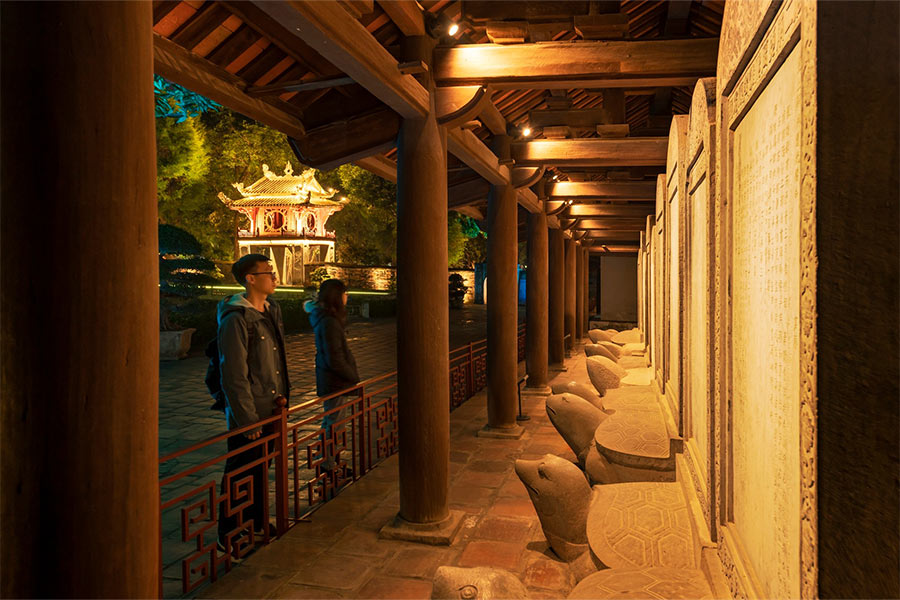
The temple has stones written with the names of great scholars for honor
One of the most notable additions to the Temple of Literature occurred during the 15th century, under the reign of Emperor Le Thanh Tong. The complex was expanded, and additional structures were erected, including pavilions, gates, and courtyards, amplifying its grandeur and significance. It became a center for learning and education, attracting scholars from across the country who came to study Confucian principles, literature, poetry, and governance.
Throughout its long history, the Temple of Literature has played a crucial role in shaping Vietnam's intellectual and cultural landscape. It was not only an academic institution but also a symbol of national pride and identity. The temple symbolized the importance of education and the pursuit of knowledge in Vietnamese society, embodying the values of scholarship, virtue, and morality.
You may like: Vietnam Classic Highlights Tours
The architecture of the Temple of Literature in Hanoi is a captivating fusion of traditional Vietnamese design and Confucian principles, encapsulating centuries of cultural heritage. Symmetrically laid out, the complex comprises five courtyards interconnected by pathways, each imbued with ceremonial significance. Its structures, predominantly crafted from wood, exemplify the meticulous artistry of Vietnamese carpentry, with intricate carvings adorning gates and pavilions. Tiled roofs, gracefully curved and upturned at the corners, shelter the buildings, symbolizing protection and prosperity.

Its architecture is a captivating fusion of traditional Vietnamese design and Confucian principles
Throughout the complex, decorative elements abound, from dragon and phoenix motifs to symbolic imagery representing Confucian virtues and scholarly pursuits. Stone stelae, mounted atop tortoises, honor scholars of bygone eras, while altars dedicated to Confucius and revered figures serve as focal points for spiritual reverence. Lush gardens, tranquil ponds, and water features further enhance the temple's aesthetic appeal, inviting contemplation and reflection. In its entirety, the architecture of the Temple of Literature stands as a testament to Vietnam's rich cultural legacy, inspiring visitors with its beauty, symbolism, and historical significance.
You may like: Vietnam Short Trips
There are many attractions on this site for you to discover when you come to visit the Temple of Literature:
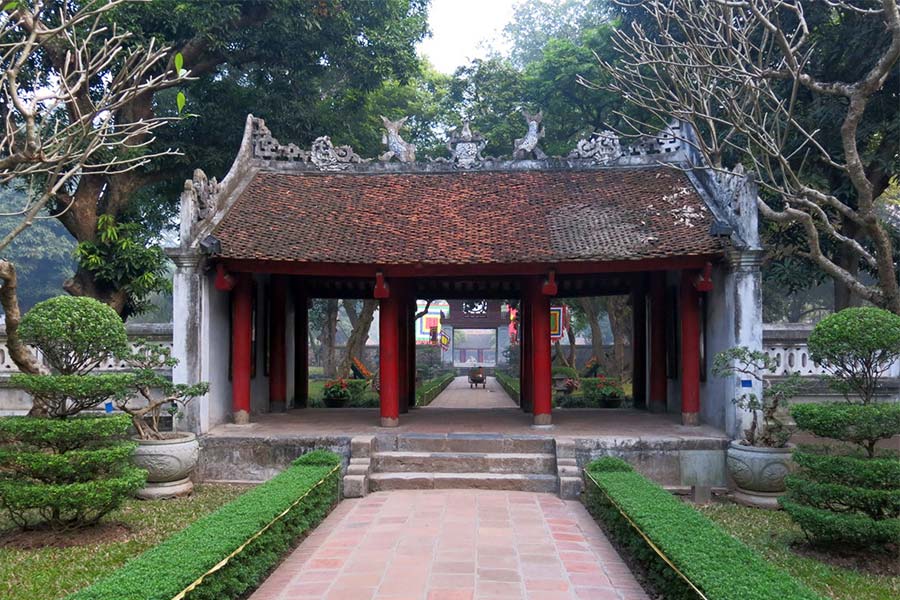
The Dai Trung Mon Gate leads to the second part of the temple
Main Gate (Đai Trung Mon): Dai Trung Mon means a big gate in the center. Its design symbolizes the grandeur and solemnity associated with the pursuit of knowledge and wisdom. The gate also holds spiritual significance as a gateway to intellectual enlightenment and moral cultivation. Passing through this gate signifies a journey of self-discovery, learning, and personal growth, and ethical conduct.

Courtyards and gardens in the temple offer peaceful spaces for reflection and exploration
Courtyards and Gardens: The temple grounds are adorned with serene courtyards, lush gardens, and ancient trees, providing peaceful spaces for reflection and exploration.

Stelae of Doctors has the names of scholars who passed the examnination
Stelae of Doctors (Tau Thu): These stone stelae mounted on tortoises commemorate the names and achievements of scholars who passed the royal examinations. They offer insights into Vietnam's scholarly history.
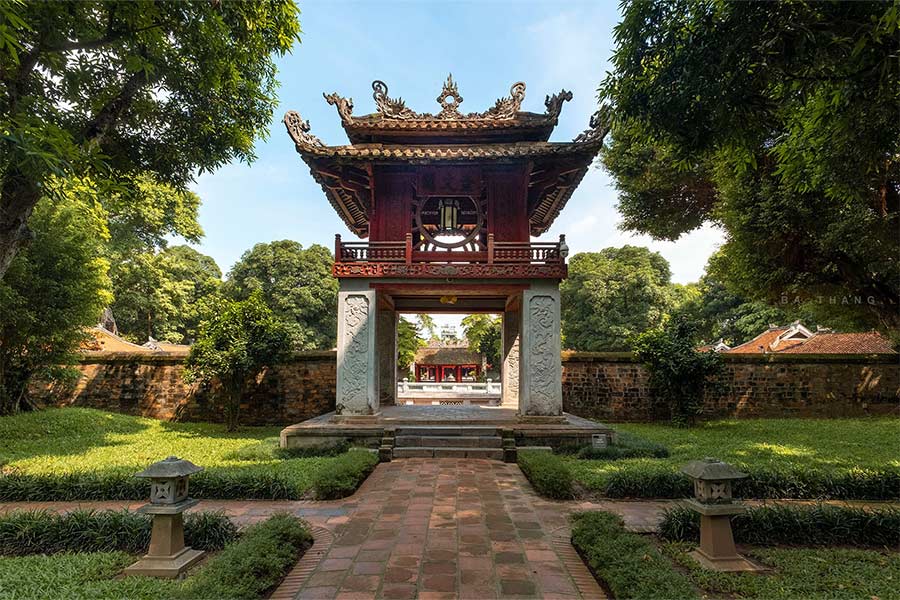
Khue Van Cac is the symbol of the temple and Hanoi
Khue Van Cac Pavilion: Also known as the Pavilion of the Constellation of Literature, this iconic structure is featured on Vietnam's 100,000 VND banknote. Its elegant design makes it a favorite spot for photographs.
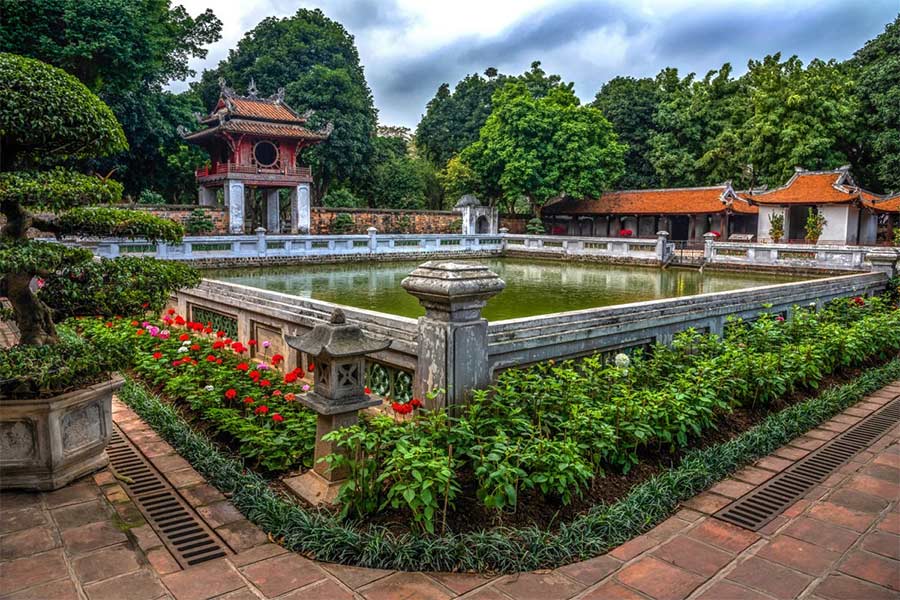
The Thien Quang Well holds a implication of the well that reflects of people's wisdom
The Well of Heavenly Clarity (Thien Quang Tinh): Thien Quang Tinh means a well that reflects the light of the sky, also implying the reflection of people's wisdom. Legend has it that if students wash their faces with water from this well before taking exams, they will achieve academic success.

Quoc Tu Giam is the first university of Vietnam
Imperial Academy (Quoc Tu Giam): Explore the historic halls and buildings that once housed Vietnam's first university, gaining insight into traditional Vietnamese education and scholarly pursuits.
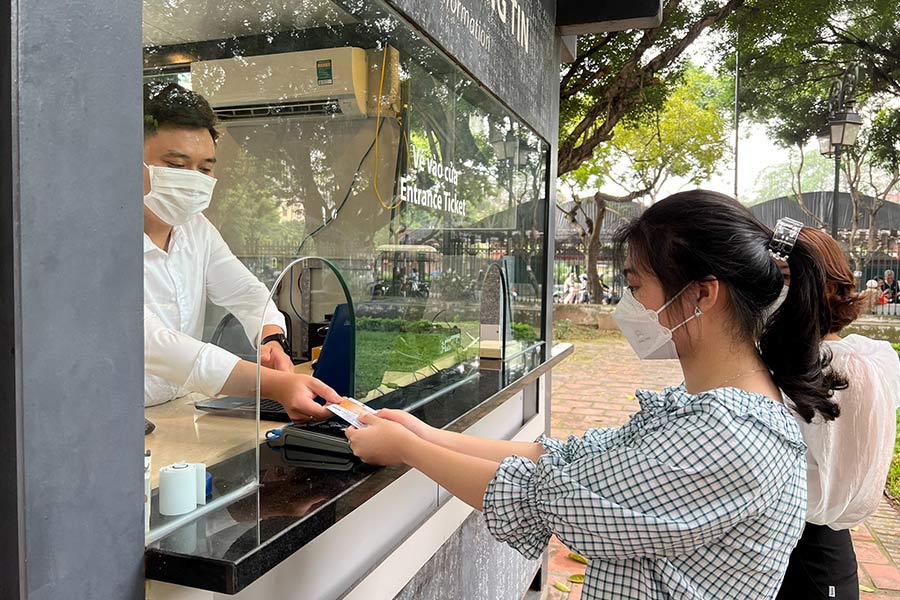
Tourists need to buy tickets to visit the temple
Entrance fee: Over the holiday period, approximately 12,000 tourists visited the Temple of Literature - Quoc Tu Giam. Additionally, on the first day of 2024, admission prices rose from 30,000 VND (1.50 USD) to 70,000 VND (3 USD) per person.
Miscellaneous Expenses: Souvenirs, drinks, and other miscellaneous expenses might add up to $10 to $20 USD per day.
Once you arrive near the Temple of Literature, it's easy to find the entrance as it's a prominent landmark in Hanoi. Be sure to check the opening hours before your visit, and consider arriving early to avoid crowds, especially during peak tourist times. The Temple of Literature is open every day of the week and during Tet holidays to serve the sightseeing needs of domestic and foreign tourists.
To get to the Temple of Literature in Hanoi, you have several transportation options depending on your starting point. If you are already in Hanoi, consider these options:
Taxi or Ride-Hailing Services: Taxis and ride-hailing services like Grab are convenient options for getting to the Temple of Literature from anywhere in Hanoi. Simply use a taxi app to book a ride directly to the temple.
Public Bus: Hanoi has an extensive public bus network, and several bus routes pass near the Temple of Literature.
Motorbike Taxi: Motorbike taxis, known as "xe om" in Vietnamese, are a popular mode of transportation in Hanoi. You can easily find motorbike taxi drivers around the city who can take you to the temple for a negotiated fare.
Cyclo: For a more traditional and leisurely experience, you can take a cyclo ride to the site.
Walking: If you're staying in the central part of Hanoi, such as the Old Quarter, it's possible to walk to this site if you don't mind a longer walk. It takes around 20-30 minutes to walk from the Old Quarter to the temple.
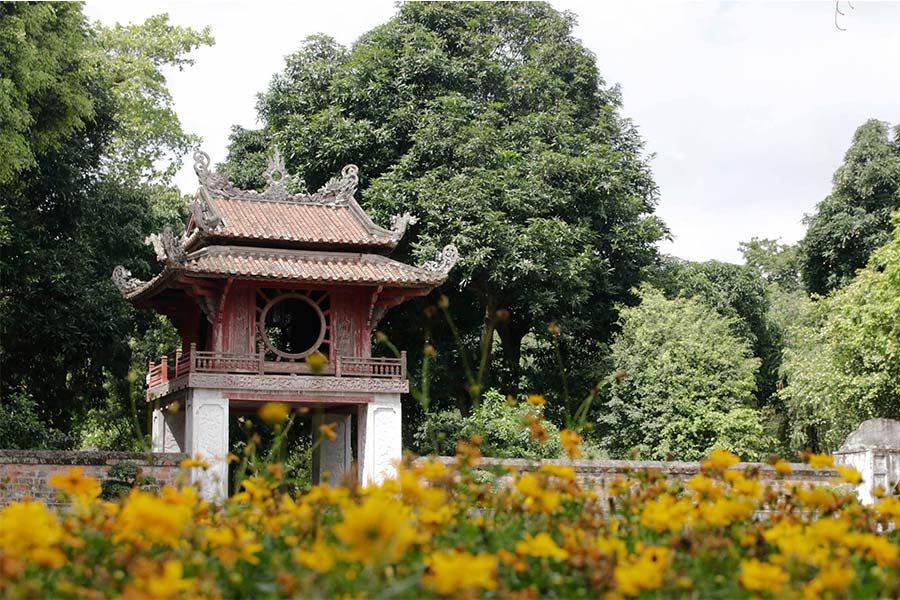
Explore the Temple of Literature with Asia King Travel
The Temple of Literature is a complex interplay of tradition and modernity, reflecting the national enduring spirit of studiousness and evolving identity and continuing to inspire writers and readers alike. Contact us to join our exploration of its historic splendor and scholarly significance, as well as its spiritual and intellectual legacy within an ancient setting